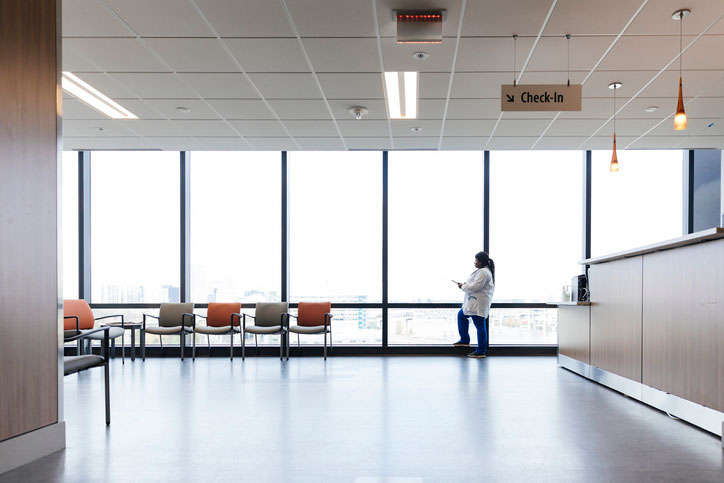 |
| Structural obstacles that keep minority patients out of eye care offices leads to higher rates of glaucoma, study finds. Photo: Getty Images. |
The type of care an individual with glaucoma receives may be tied to their race, suggesting disparities exist among certain minority populations in the United States, a new study in Ophthalmology reports.
The research team from Harvard University and the Marcus Institute for Aging Research in Boston found an imbalance in the types of eye-related treatment received by individuals who were Black or Hispanic vs. white. Additionally, these differences persisted among Black individuals even after stratification by socioeconomic status, suggesting that systemic racism may be an independent driver in this population, the study authors noted.
The investigators also reported that Black and Hispanic beneficiaries were less likely than their white counterparts to have outpatient follow-up and glaucoma testing. On the other hand, Black and Hispanic patients were more likely to undergo procedural intervention. Black patients were more likely than white patients to undergo glaucoma surgery, while Hispanic individuals were more inclined to receive selective laser trabeculoplasty (SLT).
The researchers analyzed the records of roughly 79,000 individuals with glaucoma who were Medicare beneficiaries from 2014 to 2016. Race and ethnicity categories in the study included non-Hispanic white, Black/African-American, Hispanic and Asian/Pacific Islander. The study also considered the number of eye exams and eye care–related office visits, ocular inpatient and emergency department (ED) encounters and nursing home and home-related eye care visits. Other metrics included visual field (VF) and retina nerve fiber layer (RNFL) OCT tests and glaucoma and laser surgeries. Patients were about 79 years old, approximately 78% were non-Hispanic white and roughly 14% met enrollment-based criteria for low socioeconomic status.
Compared with white beneficiaries, Black patients had fewer outpatient visits and VF tests. On the other hand, these individuals tended to have more inpatient/ED encounters and surgeries.
Looking into trends among Hispanic patients, these individuals had fewer outpatient visits and RNFL OCT tests but more inpatient/ED encounters and SLT surgeries compared with non-Hispanic whites.
Even when considering individuals who weren’t from low socioeconomic backgrounds, the researchers still found disparities among Blacks patients in outpatient visits, VF and RNFL OCT testing and inpatient/ED encounters compared with their white counterparts.
Although Black and Hispanic beneficiaries with glaucoma were less likely to receive outpatient eye exams or consultations, they were more likely to have inpatient, ED, nursing facility or home visit encounters with an ophthalmologist.
“In our sample, we hypothesize that Black beneficiaries with glaucoma received less monitoring, as evidenced by the lower counts of outpatient examinations and glaucoma testing, and had more severe and progressive disease at presentation, resulting in a greater likelihood of needing glaucoma surgery,” the authors wrote in their paper.
Of note, the study participants included a higher proportion of Black beneficiaries with a diagnosis code for severe glaucoma compared with white patients. A second potential explanation for both the higher rate of glaucoma procedures among Black and Hispanic patients may also be due to differences in patient medication adherence and physician perceptions of adherence, the authors suggested.
Halawa OA, Kolli A, Oh G, et al. Racial and socioeconomic differences in eye care utilization among Medicare beneficiaries with glaucoma. Ophthalmology. October 6, 2021. [Epub ahead of print]. |

